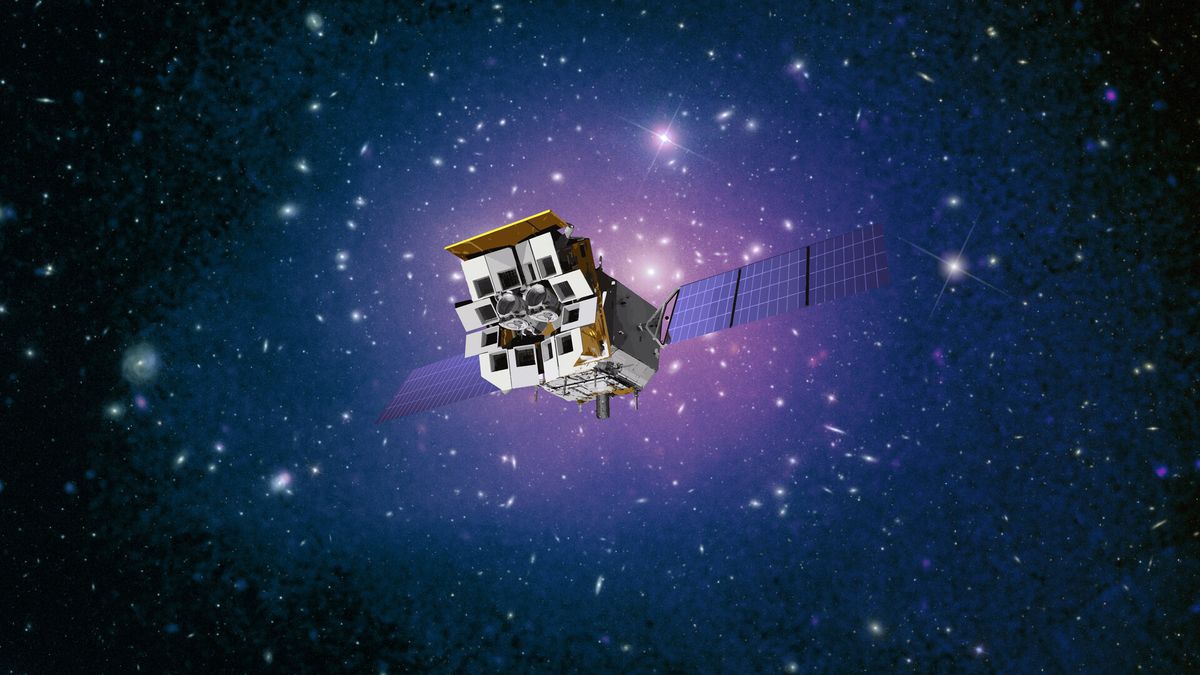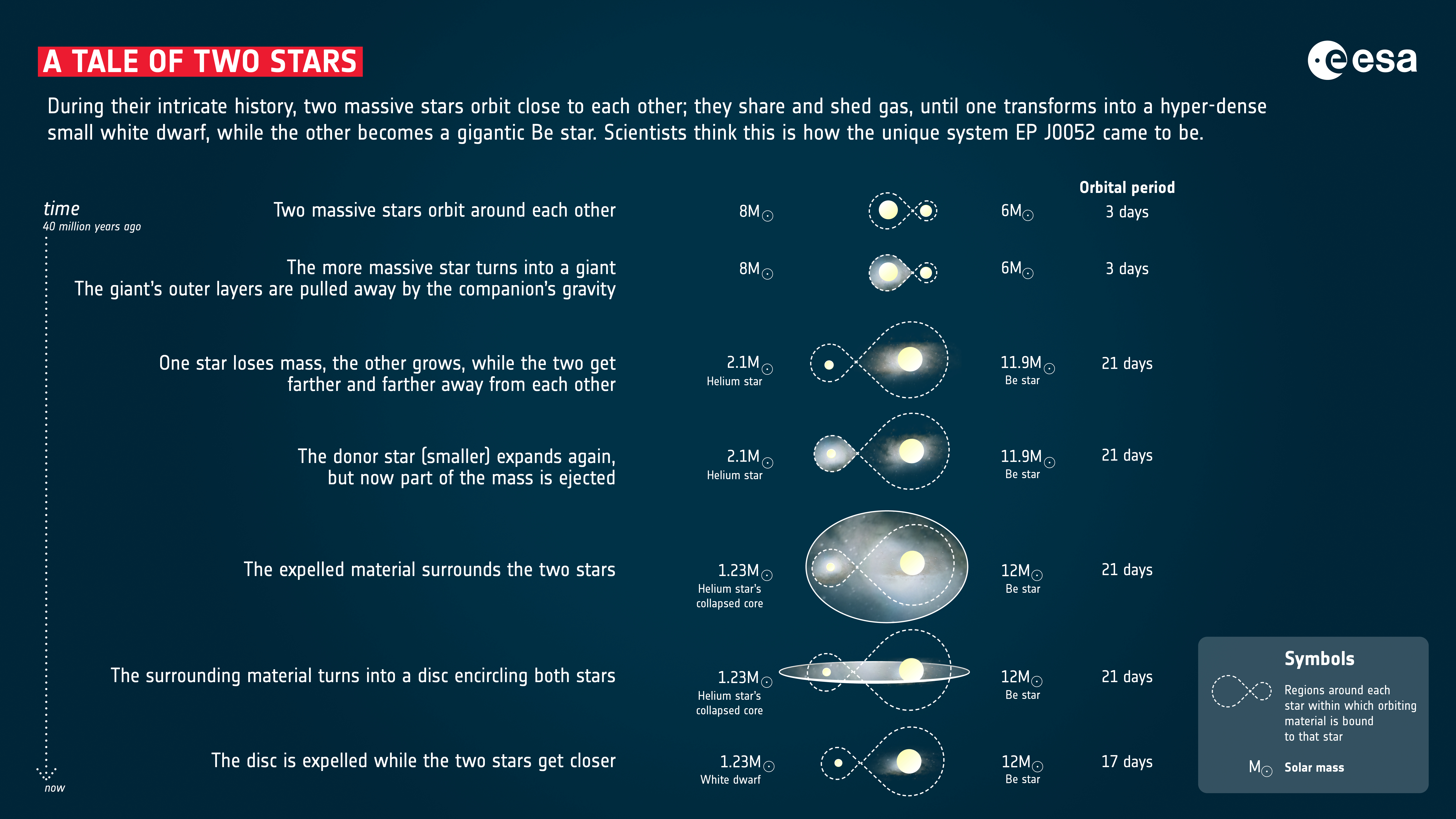
A remarkable burst of X-ray radiation stemming from a nova event on a white dwarf star has piqued the interest of astronomers utilizing the Chinese-European Einstein Probe. This particular nova is particularly intriguing because it originates from a uniquely atypical binary star system.
The intense X-ray flare was detected on May 27, 2024, originating from a star system located within the Small Magellanic Cloud (SMC), which serves as a nearby satellite galaxy to our own Milky Way.
“While we were investigating transient sources, we stumbled upon this new source of X-ray light in the SMC,” stated Alessio Marino from the Institute of Space Sciences in Spain in a press release. “We quickly recognized that we were observing something extraordinary—something only the Einstein Probe could capture.”
Launched in January 2024, the Einstein Probe aims to explore the high-energy universe, equipped with a Wide-field X-ray Telescope (WXT). This is currently the only X-ray telescope in orbit capable of detecting lower-energy X-rays with sufficient sensitivity to identify their origins.
In this instance, the source turned out to be a peculiar combination of stars.
The first star is significantly massive, about 12 times the mass of the Sun. It is classified as a “Be” star, indicative of its spectral type B and its strong spectral emission lines.
Its partner is a white dwarf star, approximately 20% more massive than the Sun. White dwarfs represent the final evolutionary stage of sun-like stars that shed their outer layers to reveal their cores.
This contrasting nature of the two stars presents a stellar anomaly. Typically, a sun-like star can exist for hundreds of millions to billions of years before evolving into a white dwarf. Conversely, a star with 12 solar masses is expected to end its life in a supernova explosion after roughly 20 million years. Thus, the question arises: how does this Be star coexist in orbit with a white dwarf companion given their disparate lifespans?
The answer lies in the material exchange between the Be star and the white dwarf, resembling a vampire-like relationship. Scientists hypothesize that the system may have initially comprised two stars with masses of six and eight times that of the Sun. The more massive a star, the quicker it depletes its nuclear fuel, resulting in a shorter lifespan.
In this scenario, the eight-solar-mass star likely reached its pivotal moment first. As its core’s fusion processes slowed, the radiation pressure that countered gravity began to lessen, causing the outer layers to compact. This increased temperature would lead to intermittent fusion in the star’s outer regions, creating pulsations that expanded its outer layers, transforming it into a red giant.
At this juncture, the outer portions of the giant star became susceptible to gravitational siphoning by the less massive star. During this time, the two stars were only a few million miles apart, completing an orbit in just three days. This close proximity enabled the less massive star’s gravity to draw material away from the massive star, depleting it. Eventually, the smaller star would grow to 12 solar masses, leaving the remnant of the eight-solar-mass star as a white dwarf with 1.23 solar masses.
Now, the compact white dwarf is reciprocating by drawing back loosely bound material from the larger star. As this material accumulates on the white dwarf’s surface, pressure and temperature increase until a localized thermonuclear explosion occurs, leading to a nova event characterized by an explosive release of light, including X-rays.
This is what the Einstein Probe detected.

“This research provides valuable insights into a seldom-seen aspect of stellar evolution, resulting from a complex material exchange between the two stars,” remarked Ashley Chrimes from the European Space Agency in the press release. “It’s captivating to observe how an interacting massive star duo can yield such an intriguing outcome.”
This transfer of material has also significantly influenced the destinies of the two stars. Typically, a six-solar-mass star would end its life by expanding into a red giant and then shedding its outer layers to leave a white dwarf behind. However, this star, having gathered substantial mass from its partner, is now fated to explode as a supernova.
On the other hand, an eight-solar-mass star lies on the edge between evolving into a red giant and exploding as a supernova; instead, it has formed a white dwarf more akin to less massive stars.
Nevertheless, it is still possible for it to explode as a supernova. Type Ia supernovae result from white dwarfs that have amassed too much mass, with a critical threshold set at 1.44 times the mass of the Sun. It would not take much additional mass to push this white dwarf past its limits, leading to a supernova explosion.
The white dwarf’s survival now hinges on the 12-solar-mass star exploding first. It becomes a race against time to determine which of the two celestial companions will outlast the other.
The results of this study were published on February 18 in The Astrophysical Journal Letters.









